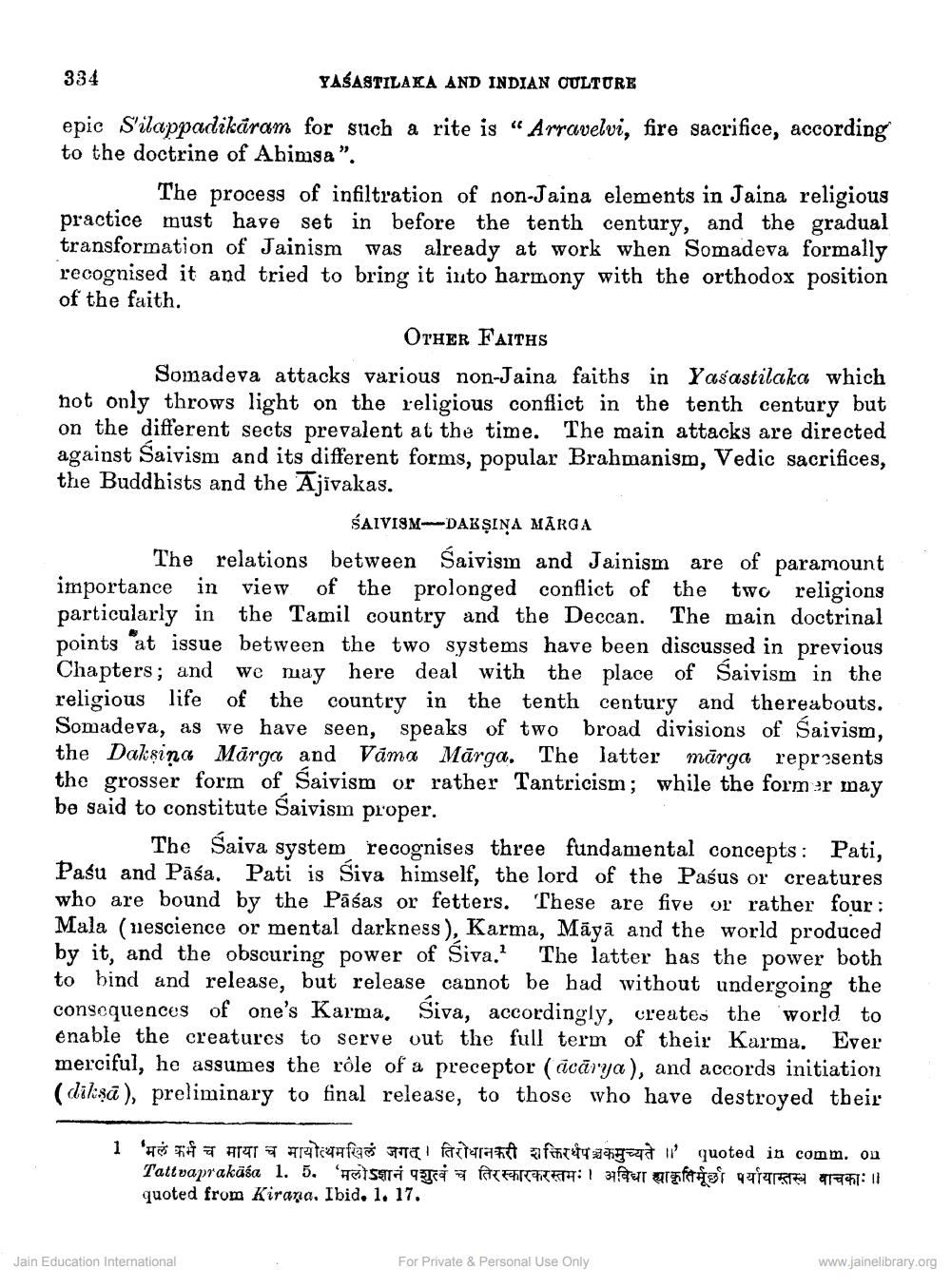________________
334
YAŠASTILAKA AND INDIAN CULTURE
epic S'ilappadikāram for such a rite is “ Arravelvi, fire sacrifice, according to the doctrine of Ahimsa".
The process of infiltration of non-Jaina elements in Jaina religious practice must have set in before the tenth century, and the gradual transformation of Jainism was already at work when Somadeva formally recognised it and tried to bring it into harmony with the orthodox position of the faith.
OTHER FAITHS Somadeva attacks various non-Jaina faiths in Yasastilaka which not only throws light on the religious conflict in the tenth century but on the different sects prevalent at the time. The main attacks are directed against Saivism and its different forms, popular Brahmanism, Vedic sacrifices, the Buddhists and the Ajivakas.
śAIVISMDAKŞIŅA MĀRGA The relations between Saivism and Jainism are of paramount importance in view of the prolonged conflict of the two religions particularly in the Tamil country and the Deccan. The main doctrinal points at issue between the two systems have been discussed in previous Chapters; and we may here deal with the place of Saivism in the religious life of the country in the tenth century and thereabouts. Somadeva, as we have seen, speaks of two broad divisions of Saivism, the Dakşiņa Mārga and Vāma Mārga. The latter mārga represents the grosser form of saivism or rather Tantricism; while the form :r may be said to constitute Saivism proper.
The Saiva system recognises three fundamental concepts: Pati, Pašu and Paśa. Pati is Śiva himself, the lord of the Paśus or creatures who are bound by the Pāśas or fetters. These are five or rather four: Mala (nescience or mental darkness), Karma, Māyā and the world produced by it, and the obscuring power of Siva. The latter has the power both to bind and release, but release cannot be had without undergoing the consequences of one's Karma. Siva, accordingly. creates the world to enable the creatures to serve out the full term of their Karma. Ever merciful, he assumes the role of a preceptor (ācārya), and accords initiation (diksā), preliminary to final release, to those who have destroyed their
1
** ATT artcafea sa facterapist aftiterat i quoted in comm. on Tattvaprakāśa 1. 5. TOISST Tafacer 14: 1 3fur alfaiat quare : 11 quoted from Kirana. Ibid. 1. 17.
Jain Education International
For Private & Personal Use Only
www.jainelibrary.org




